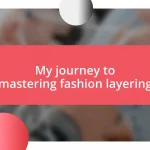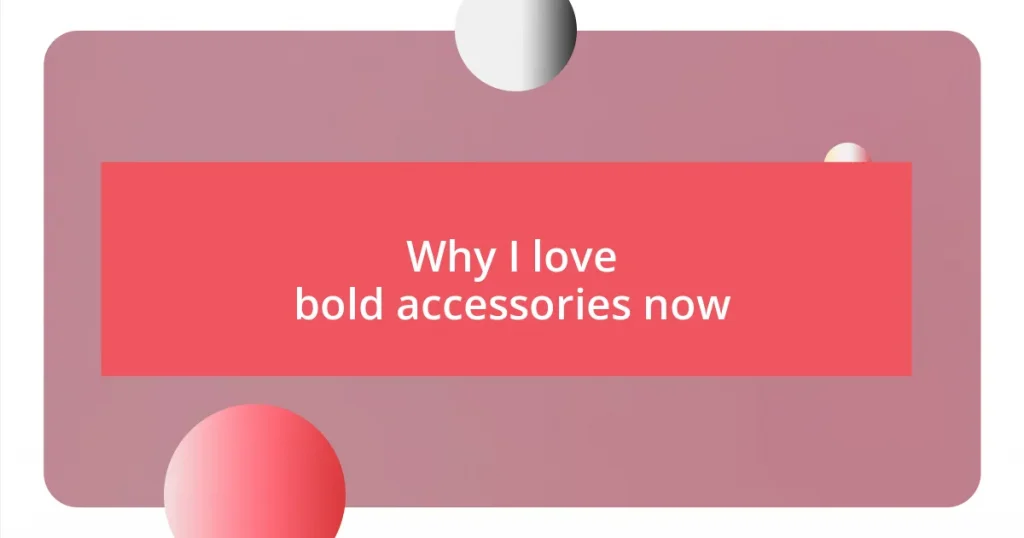Key takeaways:
- Mixing patterns effectively involves considering scale, color harmony, and texture to create a visually balanced outfit.
- Utilizing a base color and complementary or analogous colors can enhance cohesion in your ensembles.
- Experimenting with different textures adds depth and interest while confidently trusting your instincts can lead to unique style expressions.
- Incorporating accessories that echo the outfit’s colors can unify mixed patterns and elevate overall style.

Understanding pattern mixing principles
When it comes to mixing patterns, one principle that I always keep in mind is scale. For instance, pairing a large floral print with a smaller polka dot can create a delightful contrast, drawing the eye in without overwhelming it. Have you ever noticed how a bold statement piece can elevate your entire outfit? I certainly have, and it feels like magic!
Color harmony is another vital factor. I often find that choosing patterns that share at least one color can bring cohesion to an otherwise chaotic mix. It’s like finding the right notes in a song; they may differ, but together they create a beautiful melody. I remember the first time I successfully paired a striped shirt with a checkered jacket—both featured shades of blue which allowed them to gel beautifully.
Lastly, texture plays a significant role in pattern mixing. Incorporating different fabrics can add depth to your ensemble. For example, pairing a smooth silk with a textured knit makes the outfit visually interesting while maintaining balance. Have you ever felt the thrill of putting together something that feels uniquely you? It’s those moments when you realize that personal style isn’t just about the clothes; it’s about how they make you feel—confident and chic.
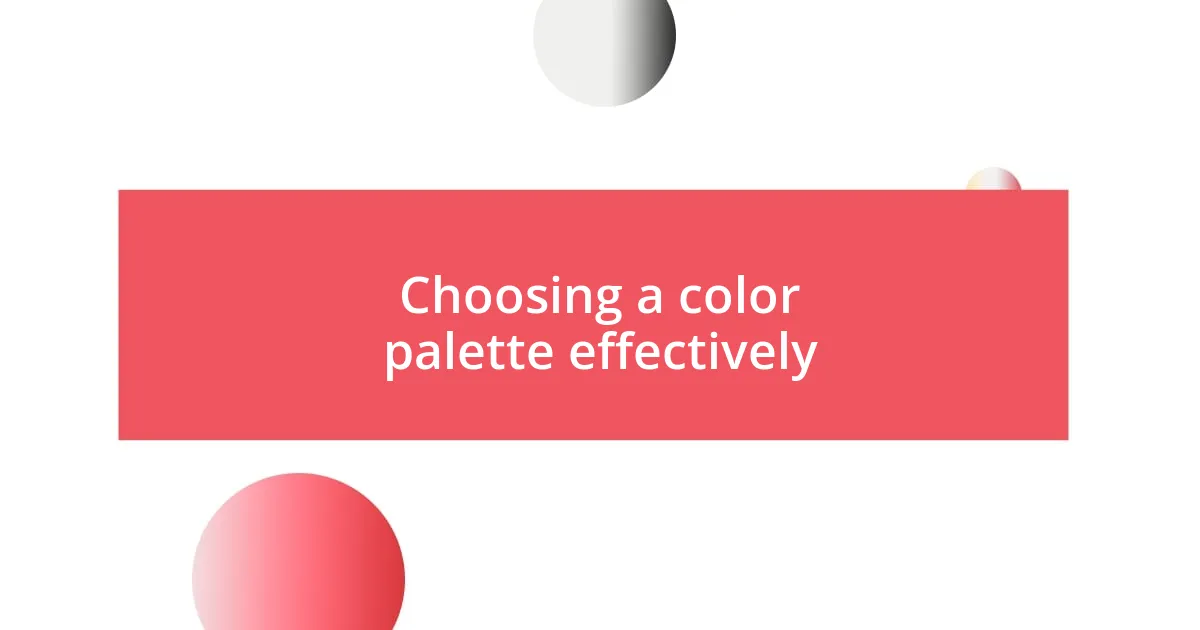
Choosing a color palette effectively
When I think about choosing an effective color palette, I remind myself to start with a base color. This key color serves as the foundation for my outfit and usually reflects my mood of the day. Just last week, I picked a deep emerald green as my primary color, which turned out to be energizing and vibrant—perfect for a meeting where I wanted to make a strong impression.
I also consider the principles of complementary and analogous colors. Complementary hues are those opposite each other on the color wheel, such as blue and orange, creating a striking contrast. On the other hand, analogous colors—like blue, green, and teal—create a more serene and harmonious look. I vividly recall the day I wore a combination of warm shades, blending rust, mustard, and olive. That bright combo not only lifted my spirits but also garnered quite a few compliments!
Another approach I find effective is to utilize a color palette generator. There are many online tools that help create visually appealing color schemes. I once used one to design my living room and was pleasantly surprised at how well the selected palette translated into my wardrobe. The result? A seamless connection between my fashion and home décor, reinforcing the idea that color is a powerful tool in expressing who we are.
| Color Type | Description |
|---|---|
| Base Color | The main color that sets the tone for your palette. |
| Complementary Colors | Colors opposite on the color wheel for bold contrast. |
| Analogous Colors | Colors next to each other on the wheel for harmony. |
| Accent Colors | Splashy colors that add interest and highlight features. |
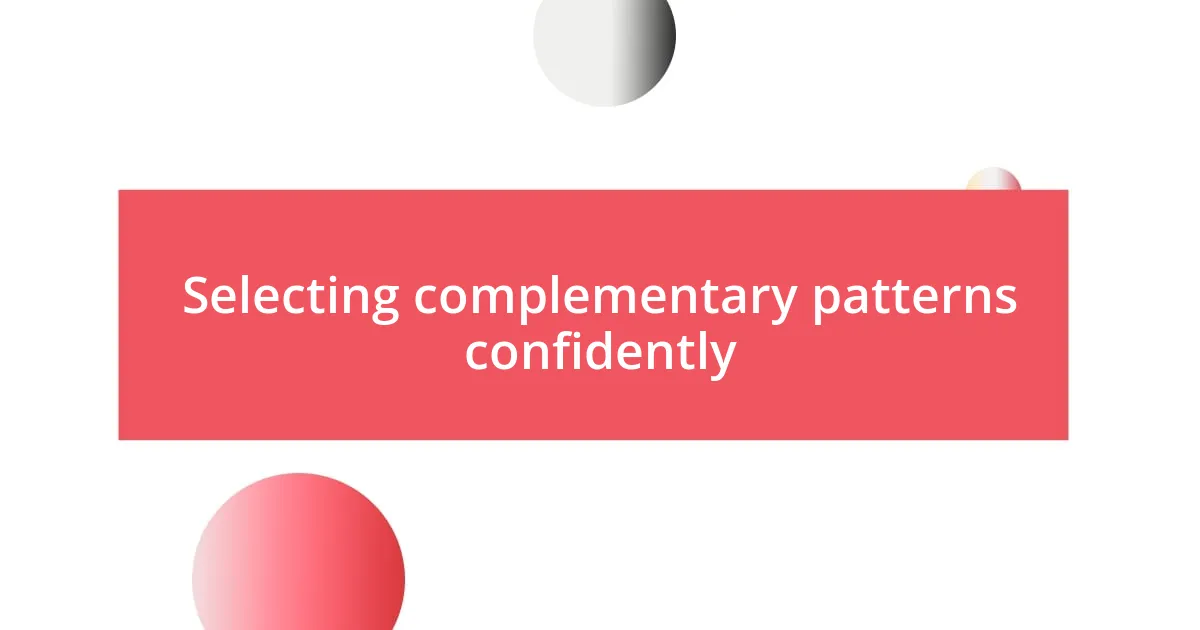
Selecting complementary patterns confidently
When selecting complementary patterns, I find that trusting my instincts can lead to some of my best outfit choices. I vividly recall a time I paired a vibrant geometric print skirt with a floral blouse. The unexpected combo turned heads, sparking conversations and compliments all day long. It was a reminder that stepping out of my comfort zone can yield delightful surprises.
Here are a few strategies that help me confidently choose patterns that work together:
- Stick to a common color: Finding at least one shared hue can tie different patterns together seamlessly.
- Vary the scales: Mixing large patterns with smaller ones creates balance, keeping the look dynamic without being overwhelming.
- Experiment with textures: Different fabrics can enhance the overall appeal, adding depth and interest to the outfit.
- Trust your eye and intuition: Sometimes, the best combinations come from simply trying different looks and seeing what feels right.
In my experience, it’s those moments of spontaneity that often lead to my favorite outfits. I remember feeling hesitant about a polka dot dress with a plaid scarf, but once I wore it, I felt empowered and effortlessly stylish. That day taught me that confidence often starts with taking a chance!
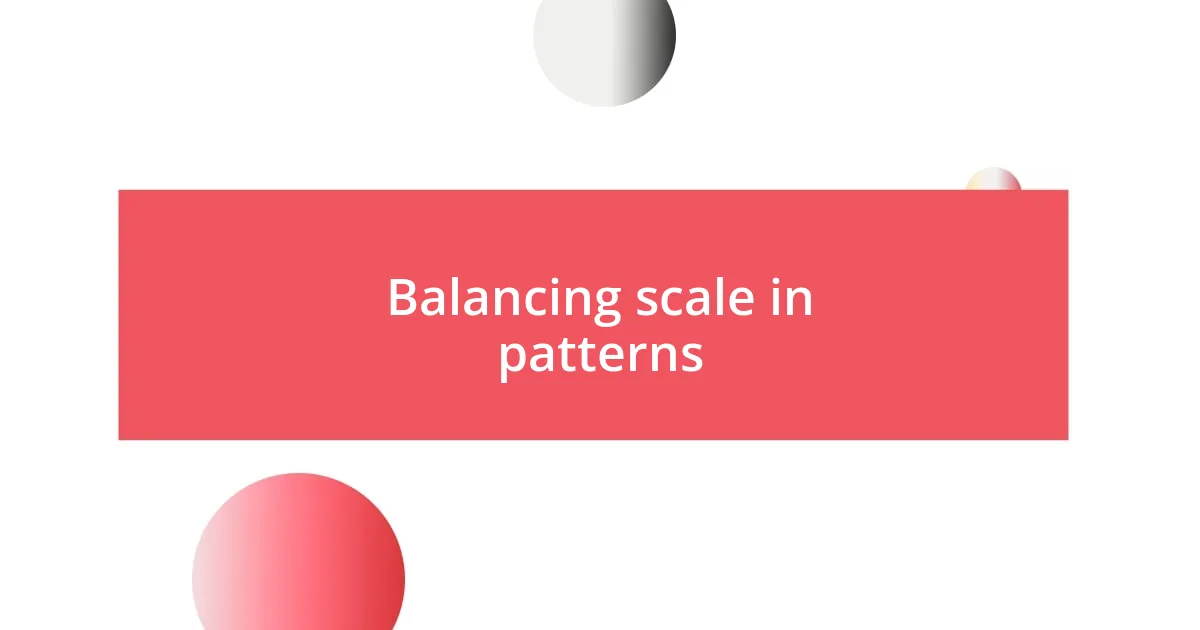
Balancing scale in patterns
When balancing the scale in patterns, I’ve learned that size truly matters. For instance, I once paired a bold, oversized striped coat with a delicate, tiny polka dot dress. It seemed like a risky move at first, but the visual contrast pulled the whole outfit together, adding intrigue without overwhelming my frame. Have you noticed how a larger pattern can create a focal point, while smaller patterns help anchor the look?
Another technique I find effective is to mix three different scales within my outfit. I remember one chilly day when I wore large floral trousers, a medium-sized checkered top, and a tiny paisley scarf. It felt exciting to layer those scales, as if I was crafting a canvas of eclectic art. Balancing sizes like this creates a playful symmetry that draws the eye and invites compliments.
Ultimately, it’s all about your comfort level with the mix. I once wore a large abstract print with tiny dashes of color, and I couldn’t help but feel a surge of confidence as I walked into a room. It was a reminder that experimenting with scale not only elevates your outfit but can also elevate your mood. What patterns are you excited to try?
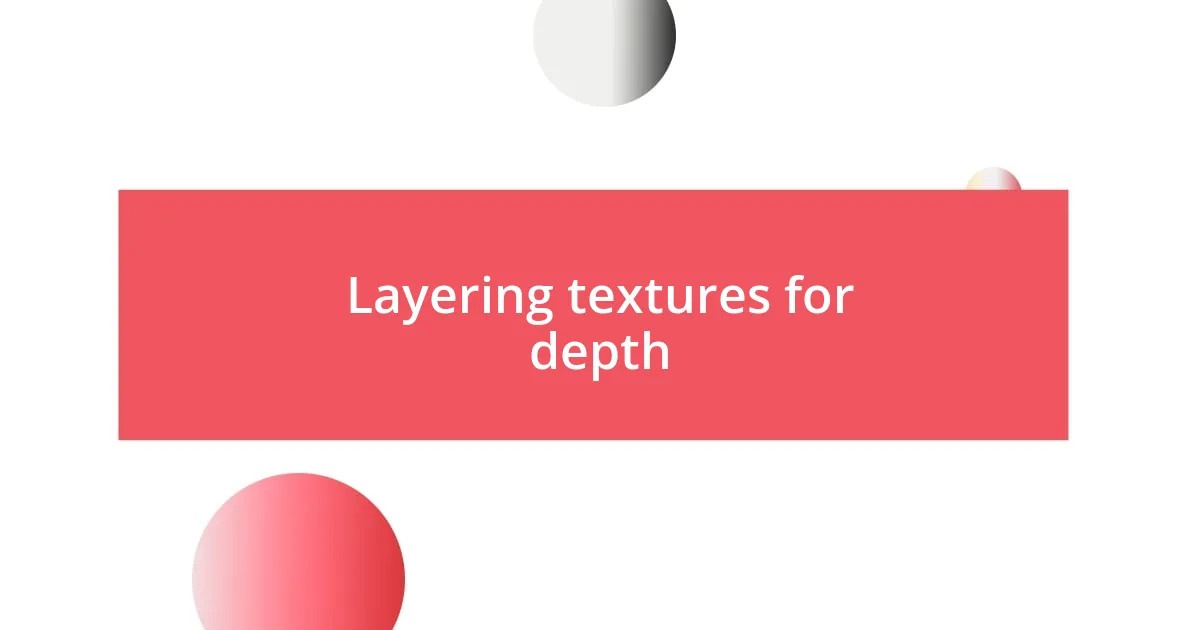
Layering textures for depth
Layering textures adds a captivating depth to any outfit, and I’ve seen firsthand how it transforms a simple look into something extraordinary. One of my favorite combinations involved a chunky knit sweater over a sleek satin skirt, creating a delightful contrast that caught the light just right. It felt like wrapping myself in warmth while still looking polished and chic—a true win-win.
In my experience, mixing different fabrics, like denim and leather, or linen and silk, can elevate a standard ensemble into a statement. I distinctly remember an evening out when I opted for a denim jacket over a flowy, silk dress. The rugged texture of the jacket complemented the soft fabric beautifully, giving me this surprising edge that made me feel both casual and sophisticated. Have you ever combined textures in a way that made you feel uniquely stylish?
It’s all about finding that harmonious juxtaposition. I once layered a corduroy skirt with a delicate lace top, and the unexpected contrast made me feel like I was blending two worlds—casual yet elegant. It struck me how important these tiny details are; they invite curiosity and often lead to engaging conversations. What textures are you eager to mix and match in your wardrobe?
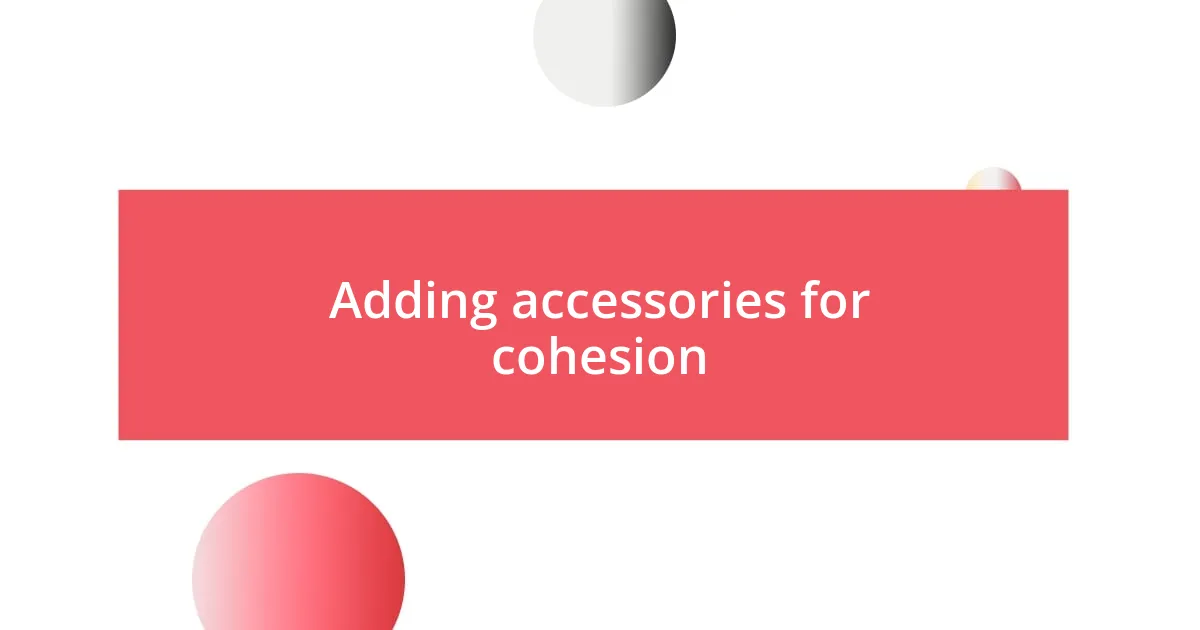
Adding accessories for cohesion
Adding accessories can truly unify your outfit and elevate your overall style. I remember one day when I decided to throw on a pair of boldly patterned earrings while wearing a mix of florals and stripes. Those earrings acted like a bridge, tying my look together seamlessly. Have you ever noticed how the right accessory can draw different patterns into harmony?
When it comes to choosing accessories, I often opt for pieces that echo the colors or themes in my outfit. One time, I wore a brightly patterned scarf that mirrored the colors in my dress. The addition not only pulled my look together but also made me feel intentionally stylish, as if I had crafted a story through fabric and color. It’s amazing how something as simple as a scarf can add that touch of cohesion, don’t you think?
I also believe in the power of the minimalist approach with accessories. On a casual outing, I chose understated gold rings to complement a busier outfit featuring mixed patterns. This choice allowed the patterns to shine while giving my look a polished finish. The right balance can elevate the outfit without overshadowing the unique combination of prints. How do you prefer to accessorize when rocking mixed patterns?
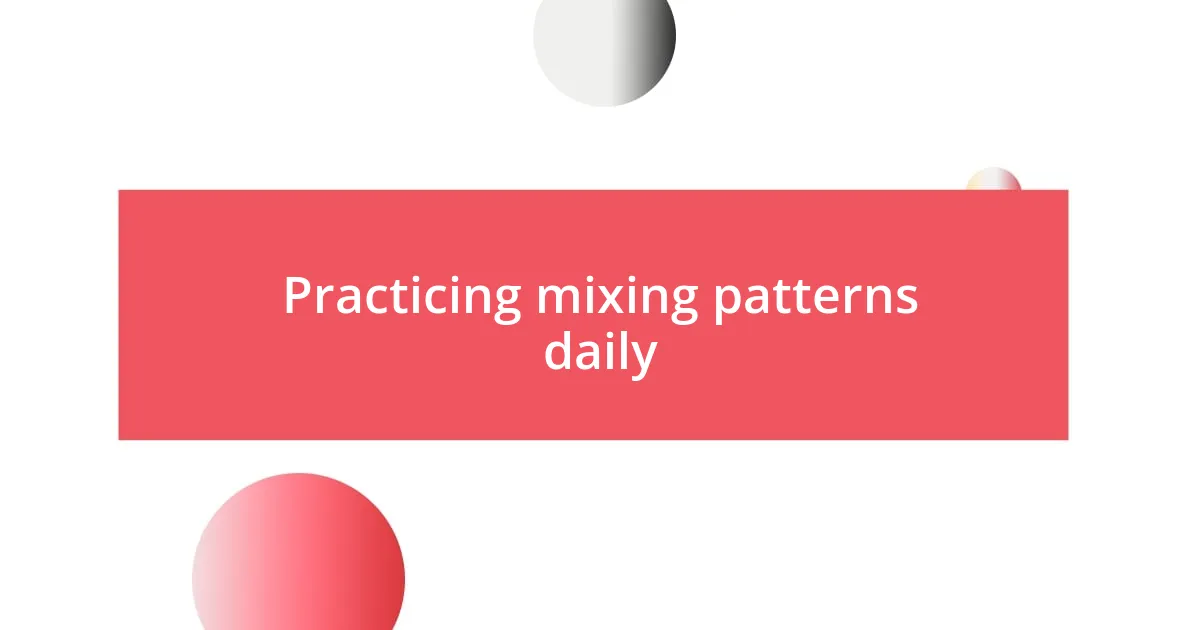
Practicing mixing patterns daily
Practicing mixing patterns daily is a fantastic way to build confidence and discover your unique style. I remember when I first started experimenting, I’d throw on a plaid shirt with floral leggings, unsure of how they would work together. Surprisingly, I loved the outcome! Each day became a fun challenge, pushing my creative boundaries and encouraging me to see new combinations that I would have previously overlooked.
One practical tip I’ve embraced is to set a “pattern challenge” for myself every morning. I might pick a striped top and then seek out a polka dot skirt or printed pants to pair it with. This exercise not only sharpens my ability to blend patterns but also invigorates my daily routine. Have you ever thought about turning your outfit choices into a game?
As I continued this practice, I noticed my comfort level skyrocketing. I distinctly remember wearing a busy geometric print with a more subdued animal print scarf one afternoon. I was amazed by the way they complemented each other while still allowing each print to shine—an unexpected yet thrilling outcome! What patterns are you eager to try mixing on your own?









